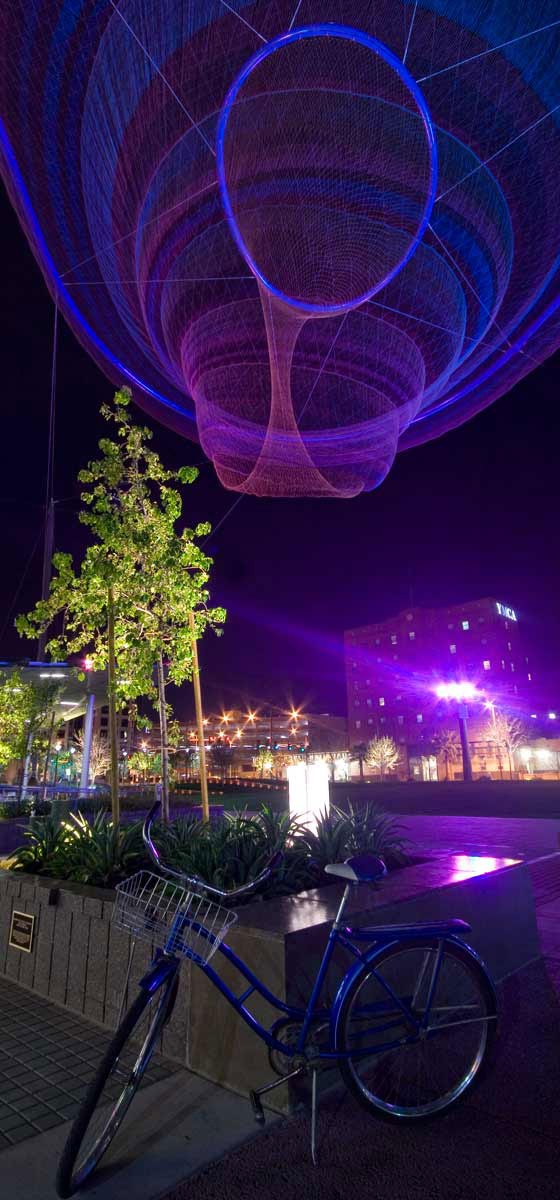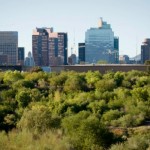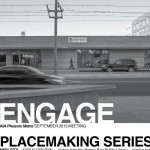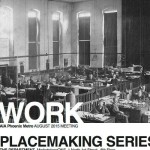DPJ is launching a new editorial series in partnership with the Phoenix Metro Chapter of the AIA (American Institute of Architects). Together we will explore the buildings and structures of our city, look closer at what makes them special, and perhaps challenge those who want to contribute to our built environment to approach downtown development in a more thoughtful way.
The Challenge
What would our city look like if we were serious about Place Making? There are several episodes and moments of delight in our city. However, living in the sixth largest city in the nation, there must be more we can do – especially architects, planners, designers, and shapers of the built realm – to make our city great. The idea of this column is to celebrate the great moments in our city, and by celebrating them, discover and create more.
What Makes a Place
1. A commitment to save the best of the old buildings. Our place is only richer when we build within and alongside the rich history that is here. While it is fragile and often overlooked, the previous users and lives that many of our buildings served offer a rich narrative as we superimpose the old and the new.
 2. Learning from international models like the rich streets in Barcelona and Paris that are lined with retail shops, restaurants and cafes. Learning from other American cities, as well, that embrace the character and climate of their place, creating places that re-engage local talent and craft into our city life.
2. Learning from international models like the rich streets in Barcelona and Paris that are lined with retail shops, restaurants and cafes. Learning from other American cities, as well, that embrace the character and climate of their place, creating places that re-engage local talent and craft into our city life.
3. Discovering collaborations – where multiple users and functions overlap – shops, coffee shops and professional offices create vibrant places where one use “contaminates” another creating a new synergy.
4. Look for blended cultures and ethnicities where we learn from the best of each culture and create new hybrids of cultural distinctions where people can discover and share new ideas.
5. Remember that People make a PLACE, not just spaces. The need for people to feel the importance of being there, making memories there, lingering there and coming back will only happen when people care about place and gain a sense of belonging.
6. Consider what makes spaces come alive. It is typically blended uses, theatres, open-air parks, shaded environments, landscape, water, plazas, coffee, ice cream, morning, noon and evening uses, parking and multi-modal forms of transportation – a rich mixture of uses and functions that offer options, spatial variety and are strengthened by one another.
7. Value authentic PLACES that are “slightly scruffy.” We need the local artists, musicians, vagrants and street people. There needs to be a loose sense of order without rigorous control so that the place is alive and dynamic while also being safe and inviting.
8. Serve the lower income community without turning away the middle class. This again lends to the ‘authenticity’ of a place that can be many things to many people.
9. Ultimately, our cities need an intricate variety of spaces that are bright and shaded, expansive and intimate, loud and quiet, crowded and sparse, natural and urban, designed and unintended, useful and artful, serious and light.
Let’s find the seeds and embryos of these spaces in Phoenix. We are searching for the SPACES that make phoenix an authentic and memorable PLACE. Let’s celebrate the best of our city and cultivate more and more places that remind us why we live here.
Note: the general framework of this thinking was inspired by Raymond J. Bakke, an urban leader who pioneered a community development approach in Chicago in the 1960s and 1970s that gave decision-making authority to residents of disadvantaged communities rather than government or outside agencies.
Jack DeBartolo 3 AIA is principal of debartolo architects ltd. and President of the Phoenix Metro Chapter of the AIA
Photos by Jack London







